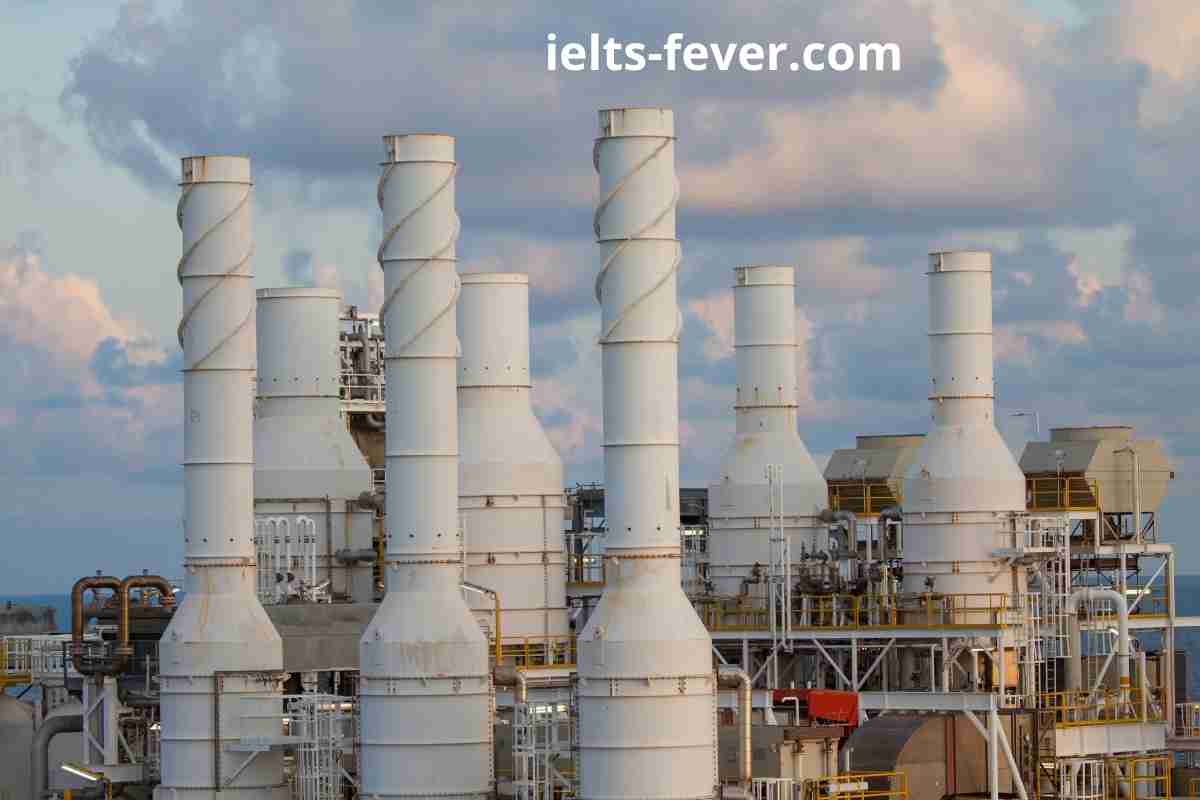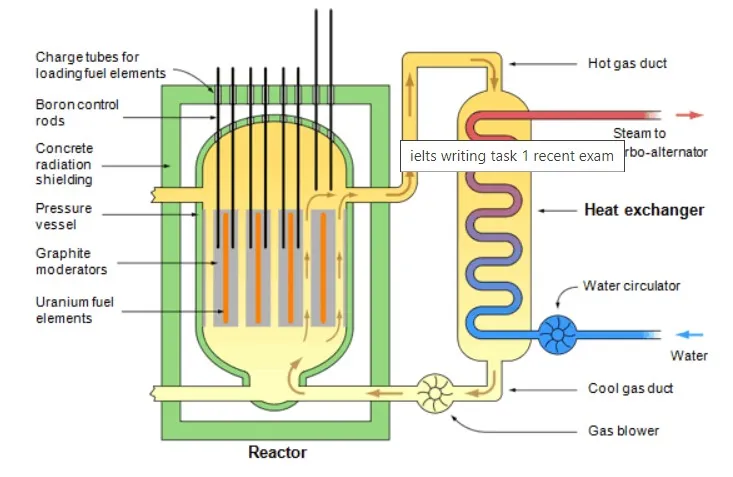The diagram below shows the production of steam using a gas-cooled nuclear reactor. Summarise the information by selecting and reporting the main features, and make comparisons where relevant.
The procedure for generating steam by means of a gas-cooled nuclear reactor is as follows.
Overall, it is immediately apparent that the process is man-made and cyclic. The process begins with the introduction of water to pipes and ends at carbo-alternator. There are a total of four components, which mainly include reactor and heat exchanger.
First of all, the water is introduced to the heat exchanger, passing from the pipes, where it got heated. Simultaneously, the gas is introduced via reactor, in which cold gas is blown by a gas blower. As it is a nuclear reactor, elements such as uranium boron and graphite are used. At the next stage, the stream of cold gases got heated. This is done in a pressure vessel, where various components such as charge tubes, boron control rods, graphite moderators and uranium fuel elements are located.
Reason concentrate radiation shield is provided, doesn’t allow radiation to flew into the outside atmosphere. In the next stage, the flow of what gases are being passed through the heat exchanger, where the water situated in pipes got heated, and the formation of heat takes place. This team is sent to the carbo alternator in the final stage. However, the hot steam converts into the colder one as the heat exchanging process takes place. The cold gas is again introduced to the reactor, and the process continues.
Follow Us on Facebook
Also Read Some People Say It Is More Important to Plant Trees in the Open Spaces in Towns


